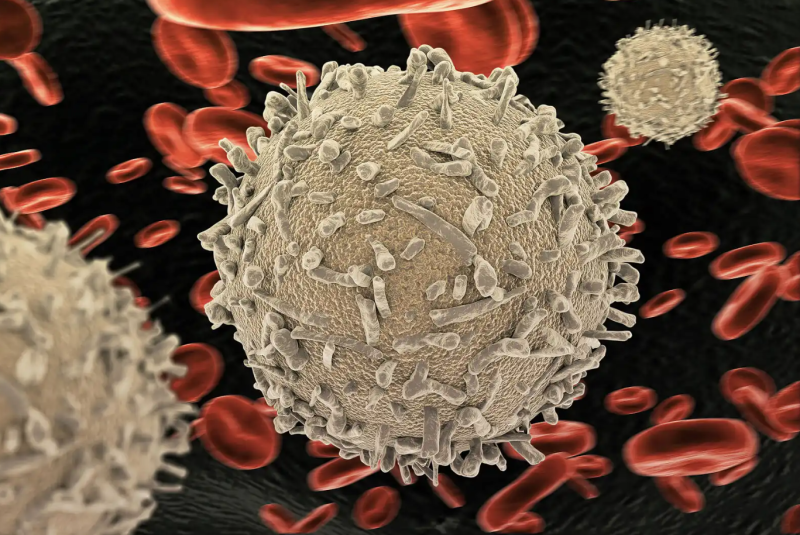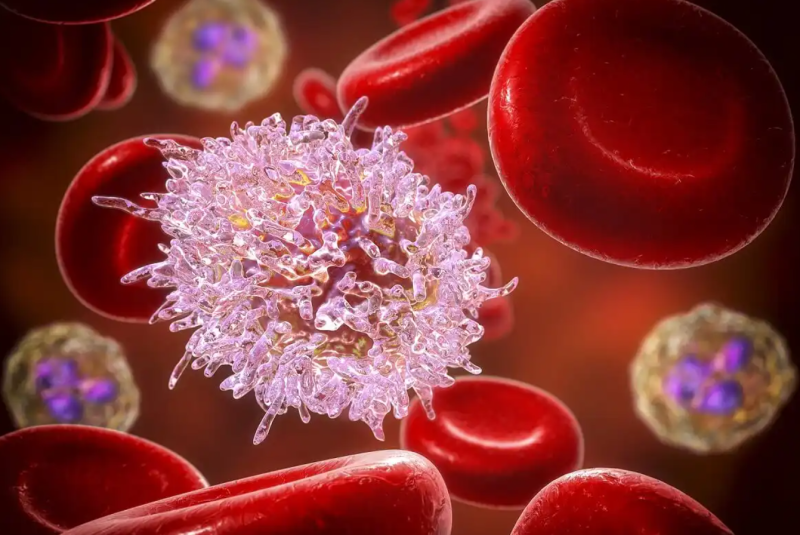
The presence of elevated lymphocytes in laboratory tests is a condition known as “lymphocytosis.” In particular, it usually occurs when the immune system responds to an infection or disease. Lymphocytes are a subtype of white blood cells that precisely help the body fight antigens.
In most cases, its increase is due to a temporary viral infection. However, the causes may vary according to age and the presence of underlying health disorders. Which is it? In the following space, we detail it. Keep reading!
Contents
What are lymphocytes, and how do they work?
Lymphocytes are a type of leukocyte or white blood cell. They are found in the blood and are part of the immune system. Its function is to identify and attack infectious agents and toxins that enter the body. Specifically, they create antibodies and help generate a response from other protective cells.
Specifically, these blood cells are produced in the bone marrow. Some travel to the bloodstream, but much is distributed through the lymphatic system. The latter group’s tissues and organs, such as the spleen, tonsils, and lymph nodes, are involved in defense mechanisms.
An estimated 25% of new lymphocytes remain in the bone marrow, giving rise to B cells. Meanwhile, the other 75% travel to the thymus and become T cells. Together, both types help fight infection.
However, while B types make antibodies, T cells kill cells that are harmful to the body, such as those infected with antigens, cancer cells, and foreign cells (such as those from organs that have been transplanted).

What do high lymphocytes mean in a blood test?
As stated in an article disclosed in the National Center for Biotechnology Information, if the blood test shows more than 4000 lymphocytes/microliter levels in adult patients, it is called lymphocytosis. This varies by age in children and may be between 5,000 and 9,000 lymphocytes/microliter.
In any case, this measurement may vary from one laboratory to another. Factors such as age, gender, family history, and even the sea level of the area where the person lives may be considered.
The percentage of these cells concerning other white blood cells is also essential. In healthy people, the average proportion of lymphocytes in the blood can vary between 20% and 40%. Obtaining figures more significant than 40% also indicates the presence of lymphocytosis.
Often, the doctor will suggest additional tests to determine if the causes of this lymphocytosis are cause for concern. Sometimes it is a temporary variation, the product of a current condition. However, it can also represent a recurring infection or a chronic disease.
types of lymphocytosis
It should be noted that this process is the consequence and not the cause of underlying pathology. Therefore, its detection is linked to the pathological process that accompanies it. According to their nature, there are two different types of lymphocytosis. These are the following:
- Monoclonal. It occurs due to a proliferative disease in which there is a defect in the lymphocyte population. We refer to some related conditions: lymphoidmphoid tumors and chronic lymphocytic leukemia.
- Polyclonal. Inflammatory or infectious processes cause it. Some associated diseases include whooping cough, hepatitis, infectious mononucleosis, and AIDS.
In any case, finding its cause and appropriate treatment to restore its value is essential. For most people, lymphocytosis goes away as the underlying condition improves.
What are the leading causes of high lymphocytes?
According to information shared in the journal Hematology, high lymphocytes are frequent after going through an infectious process.
In any case, in most cases, it is difficult to establish whether this increase is due to a benign or malignant disorder or if it is linked to stress or the use of certain drugs. The associated causes may be the following:
- Viral diseases: cytomegalovirus infections, hepatitis, HIV, mononucleosis, influenza, and other virus-related disorders. A high proportion of lymphocytes, low neutrophils, and symptoms consistent with an acute infectious process strongly suggest a viral infection.
- Diseases of bacterial origin include syphilis, tuberculosis, or whooping cough. In this setting, lymphocytosis is much less common than in viral infections. The presence of bacteria usually elevates another type of leukocyte known as neutrophils.
- Acute lymphocytic leukemia or chronic lymphocytic leukemia: regardless of its rate of progression, this type of cancer can increase the presence of lymphocytes in the blood. On many occasions, the diagnosis is reached accidentally when doing a routine analysis that shows exceptionally high values of lymphocytes.
- Lymphoma. It is a type of hematological malignancy that differs from the previous ones. It usually originates directly in tissues with abundant lymphocytes (such as lymph nodes) and solid lesions. It is classically divided into Hodgkin’s and non-Hodgkin lymphoma.
- Consumption of steroids or chemotherapy. These can cause diagnostic problems by simulating an infection without one.
- Malnutrition.
- Inherited disorders, such as Wiskott-Aldrich syndrome and DiGeorge syndrome.
Regarding its symptoms, lymphocytosis itself does not generate any apparent clinical manifestation. However, people can present clinical manifestations of the disease that causes the alteration. In this regard, patients with infections may experience the following:
- Moderate or high fever.
- Exaggerated tiredness.
- Weakness and dizziness.
- vomiting
- Cough.
- Pain in some parts of the body.
- abnormal bleeding
- Weightloss.
Risk factors for having high lymphocytes
Lymphocytosis is more common than is believed. It occurs mainly in people who have presented the following health conditions:
- Recent viral infection.
- Serious medical illness.
- Spleen removal operation.
- Reaction to a new drug.
- Certain types of cancer, such as leukemia or lymphoma.
- A medical condition that causes inflammation.

What are the therapeutic measures against lymphocytosis?
High lymphocytes should be thought of as the body’s method to indicate that something is wrong. A professional medical evaluation will allow its cause to be established and the appropriate treatment to be initiated according to the case and the stage of the disease.
In general, lymphocytes return to average values when the causative pathology is resolved. However, the values may remain altered for longer in the case of chronic diseases such as AIDS, hepatitis, or lymphomas. In this sense, the treatments are varied.
In the face of viral infections, the use of antiretrovirals (in cases such as AIDS) and other drugs that fight these pathogens can be prescribed. For their part, antibiotics are the suggested pathway for infectious processes generated by bacteria.
Lymphomas and other forms of cancer have a more complex treatment. This can even affect the results of the blood test. Some widely used therapies include the following:
- Chemotherapy.
- Targeted therapy drugs.
- Stem cell transplant.
- Radiotherapy.
- Surgery.
The doctor will opt for other therapeutic options if it is about other pathologies, such as autoimmune. In any case, at a general level, it is necessary to modify life habits.
Some measures such as a good diet, correct hydration, and the practice of physical exercise help to improve the quality of life. It is also essential to avoid bad habits such as the consumption of alcohol, tobacco, and other toxic substances.
Washing your hands regularly, avoiding contact with sick people, and ensuring good disinfection of spaces favor preventing infectious processes that alter these values.
What to remember about high lymphocytes in a test?
The increase in lymphocyte levels that is evident in a blood test may be an indication of current infectious processes. However, suppose the values are maintained over time. In that case, it is necessary to complete a study to determine if other more complex diseases explain this alteration.
In most cases, levels stabilize upon recovery from the underlying infection. Despite this, the prognosis varies depending on the severity of the underlying disease. Therefore, visiting the doctor and requesting the relevant tests and treatments is essential.